
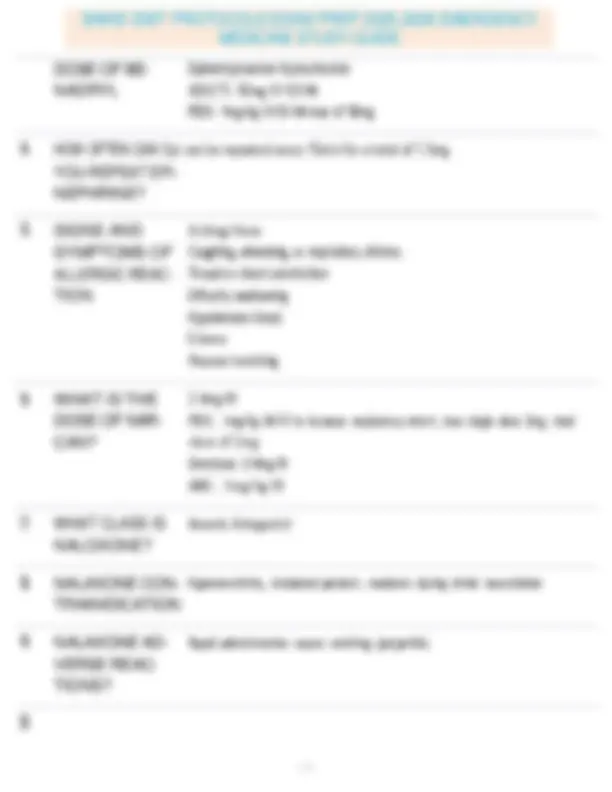
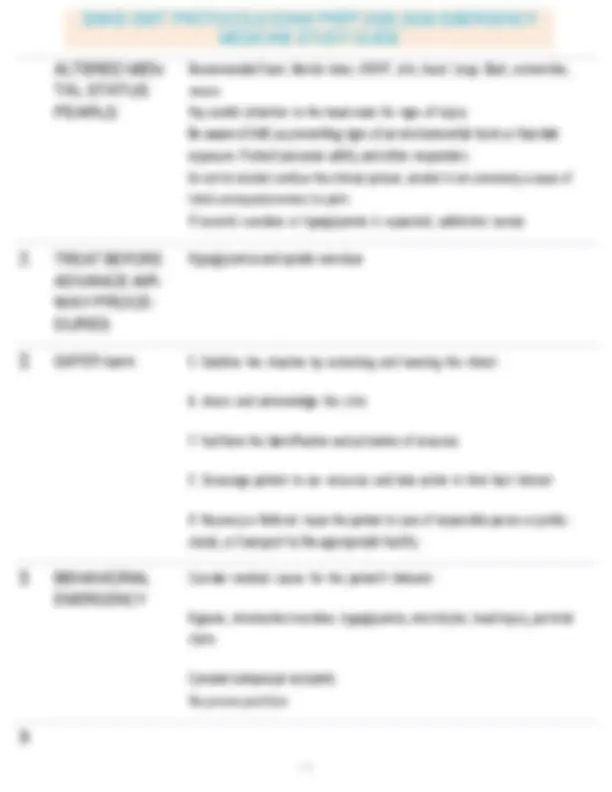
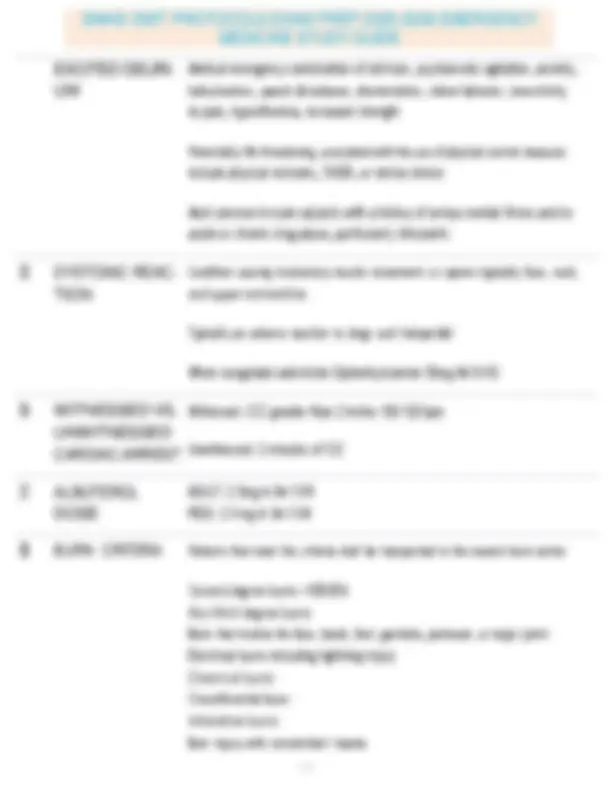
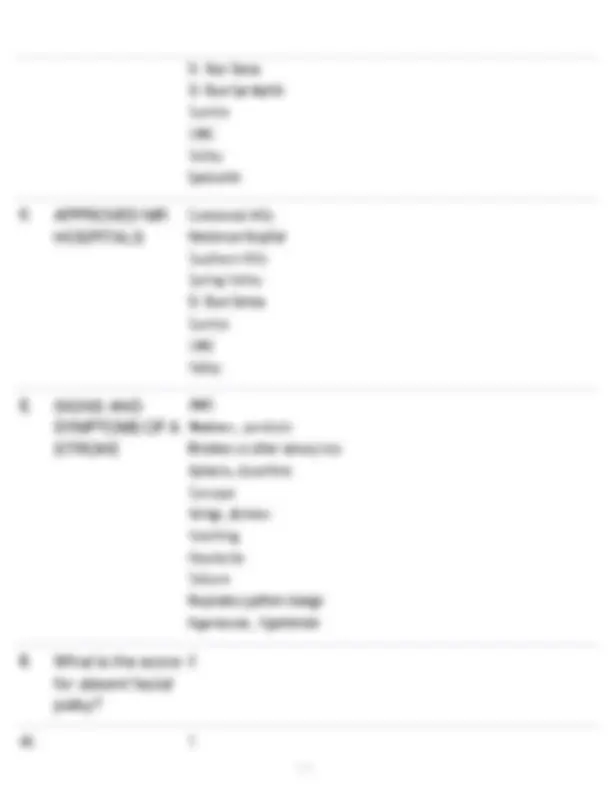
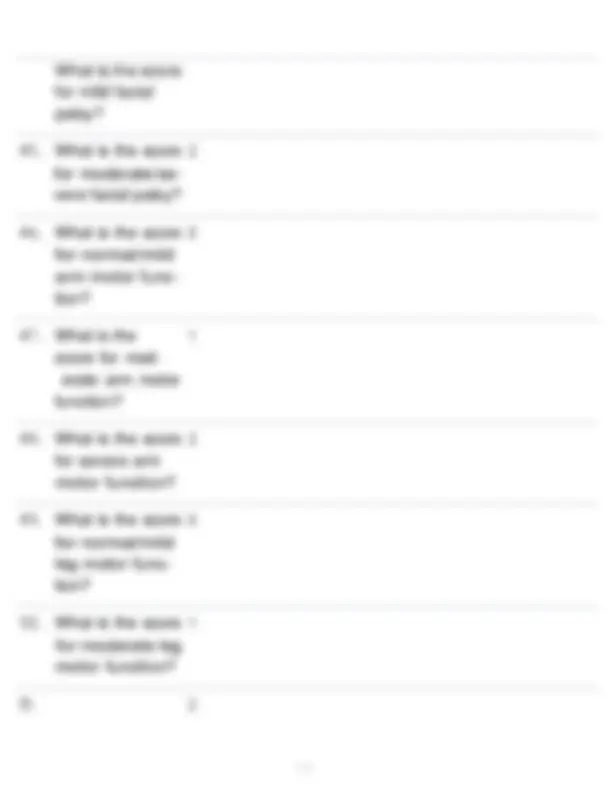
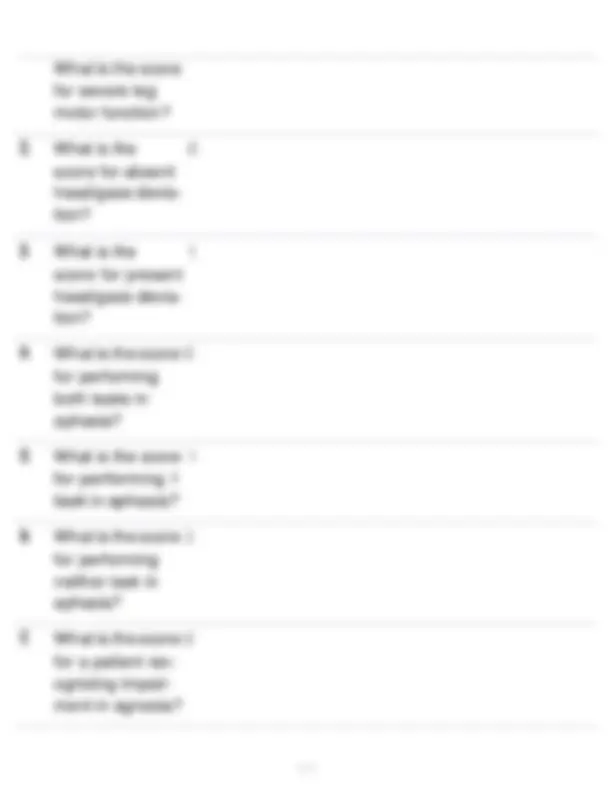
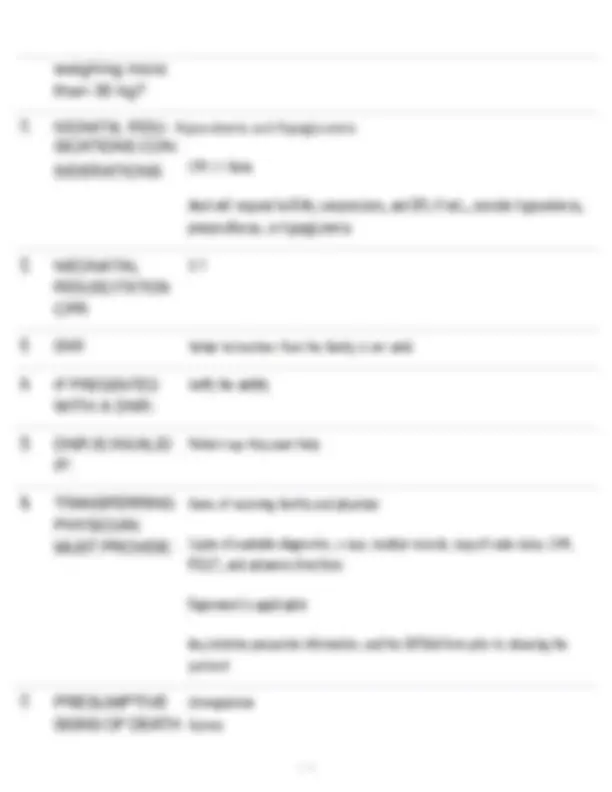
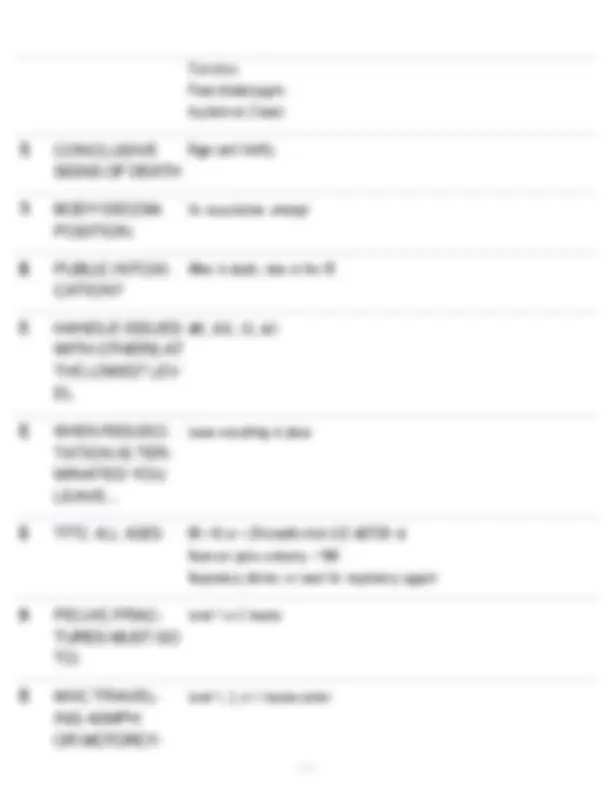
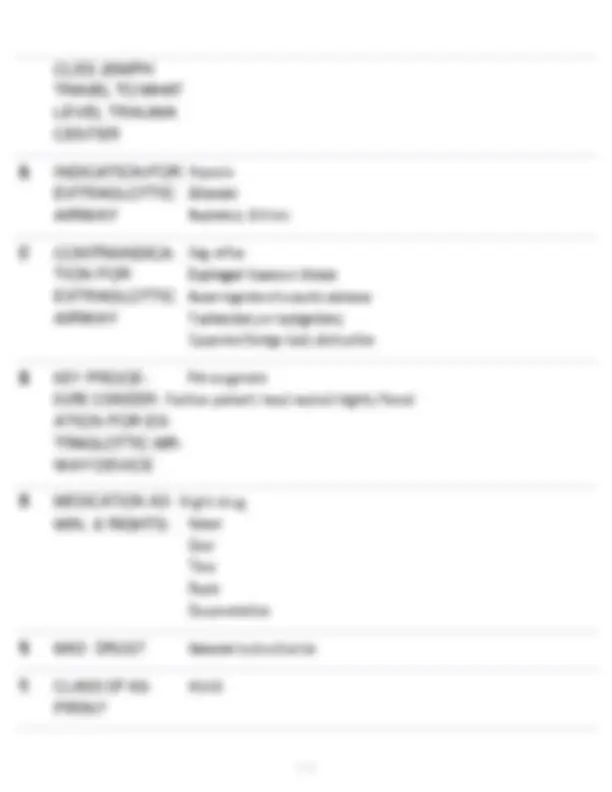
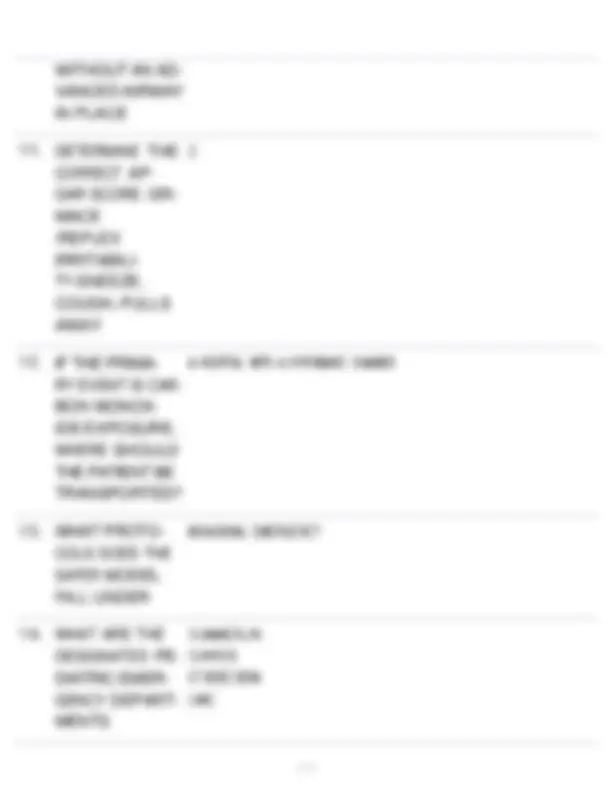
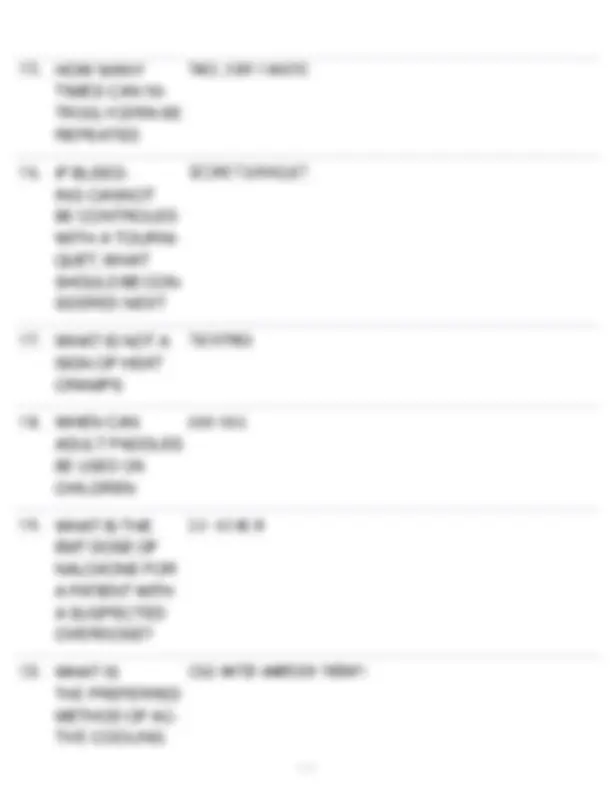
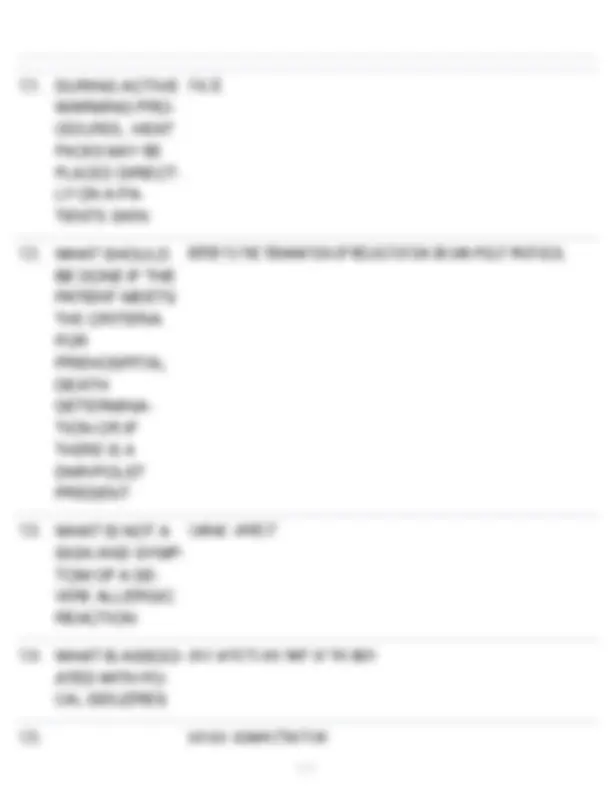
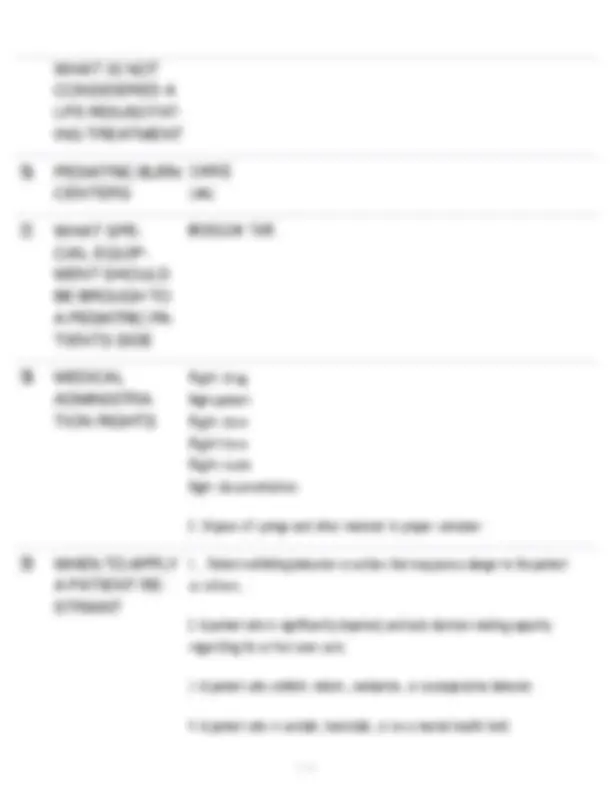
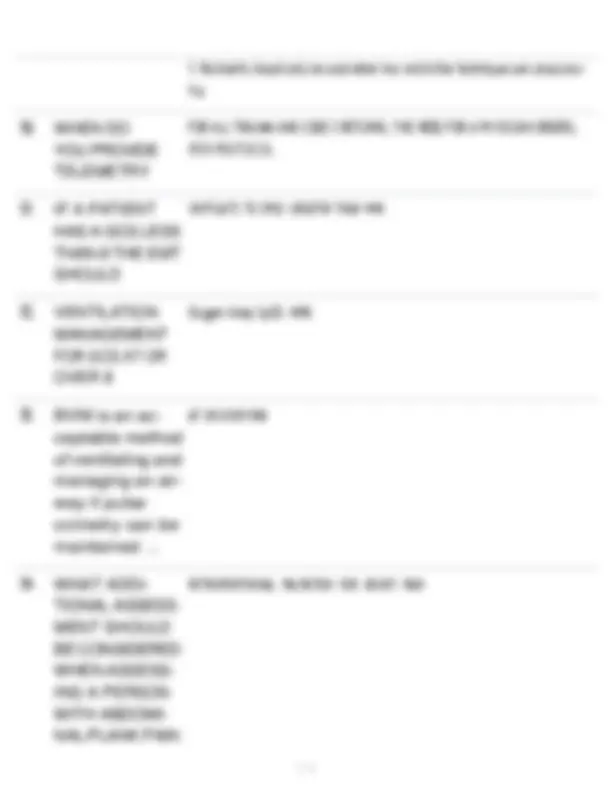
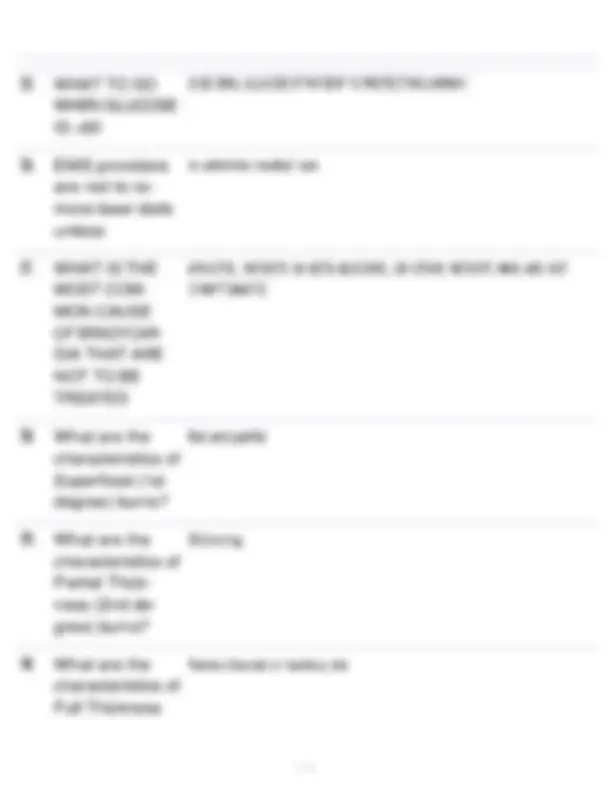
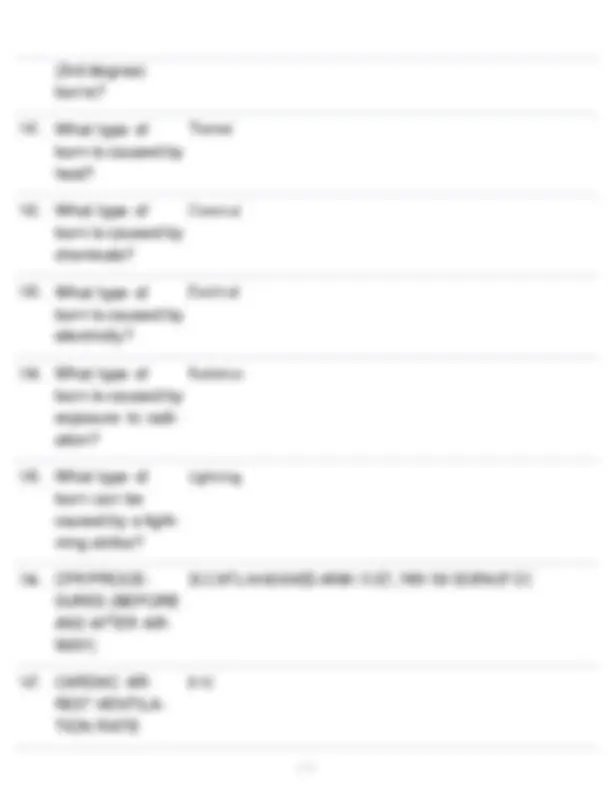
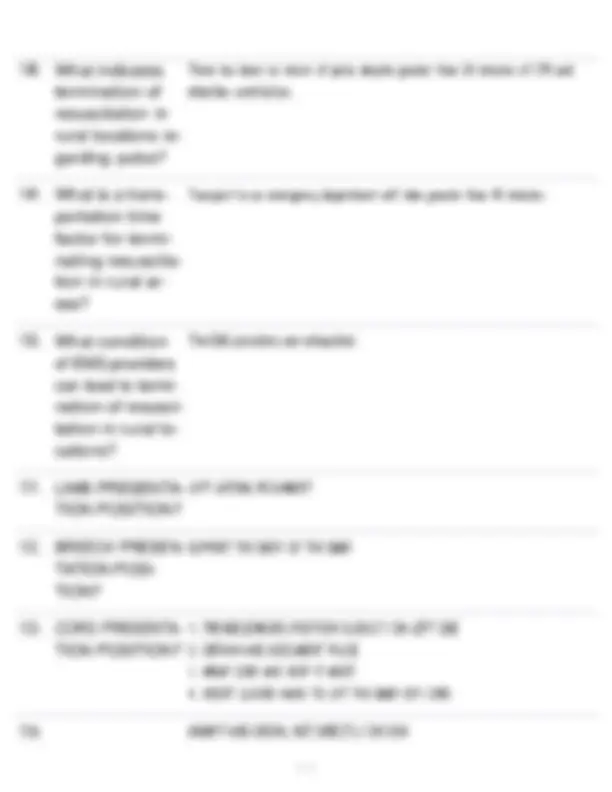
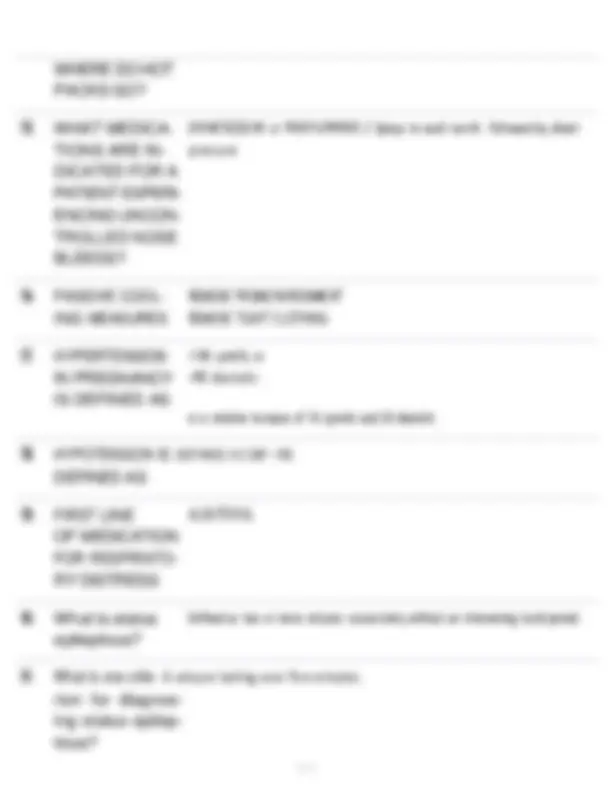
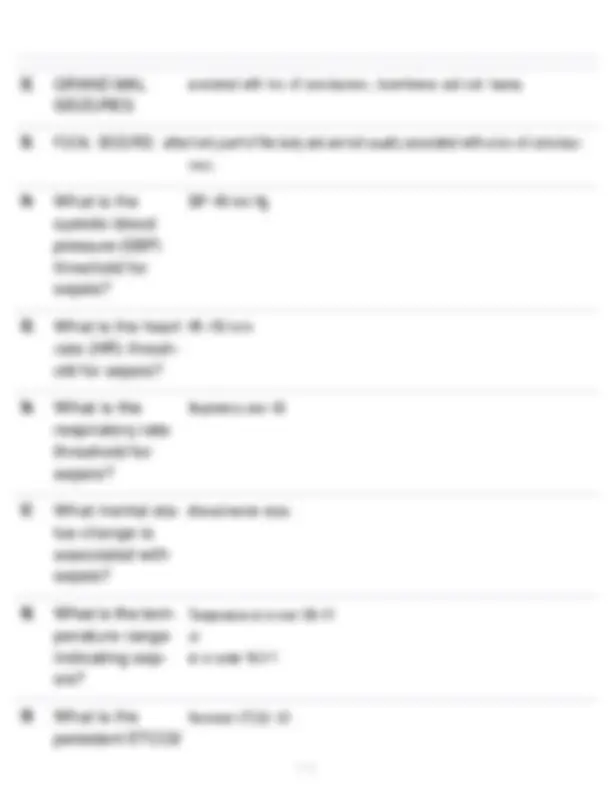
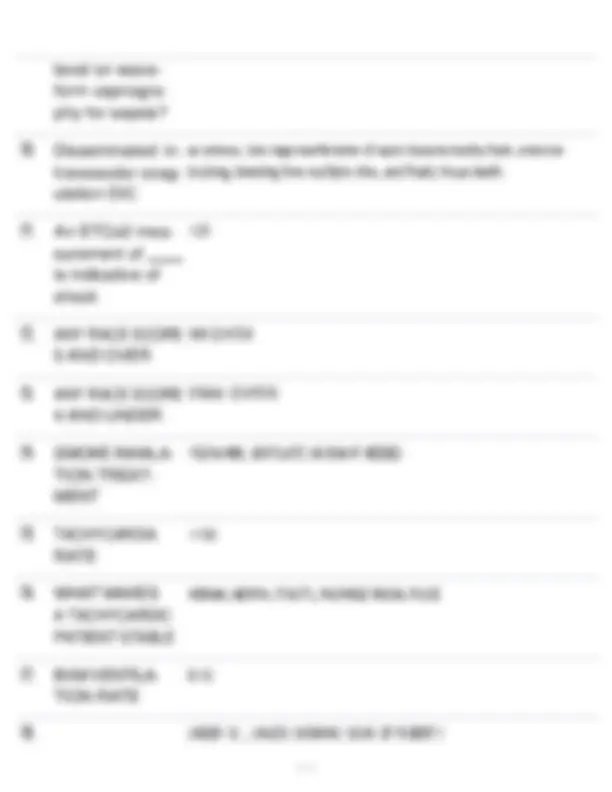
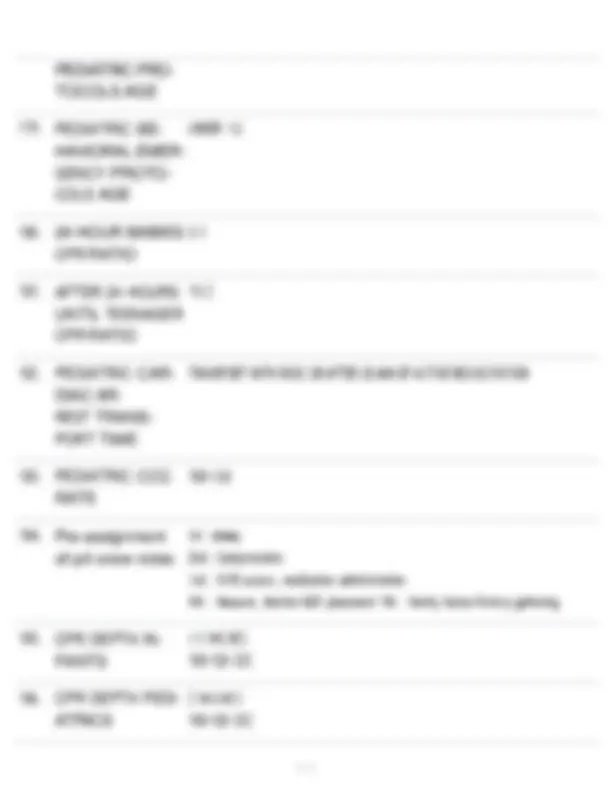
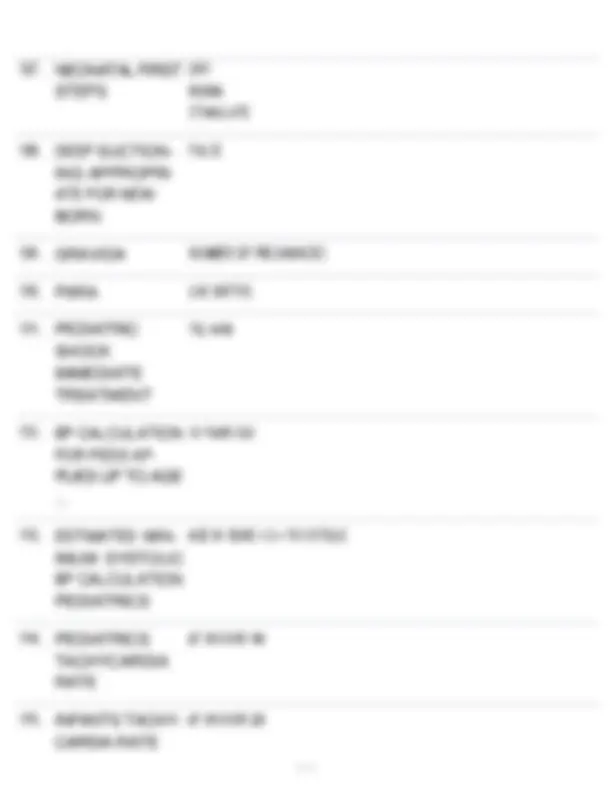
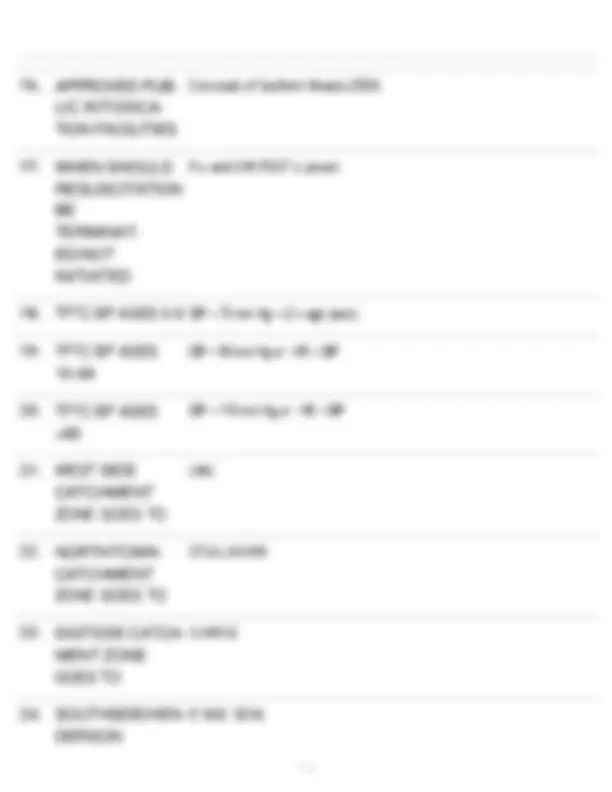
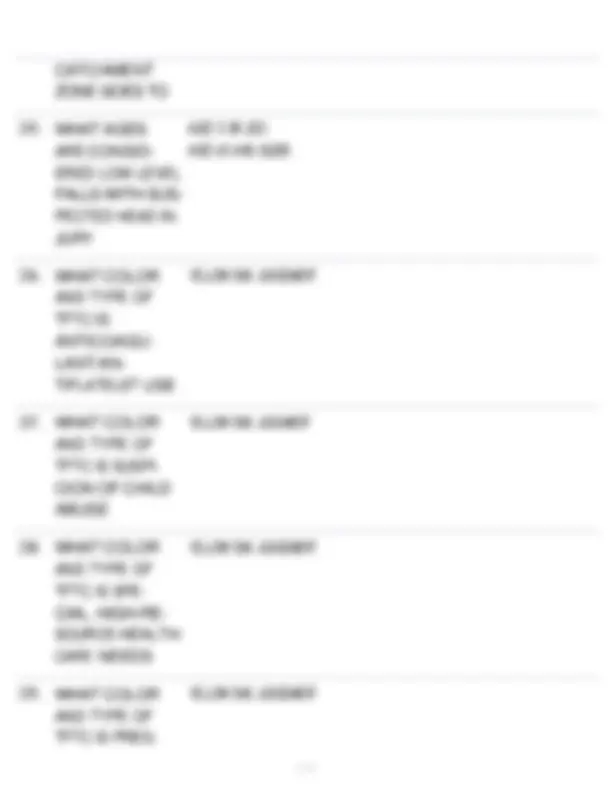
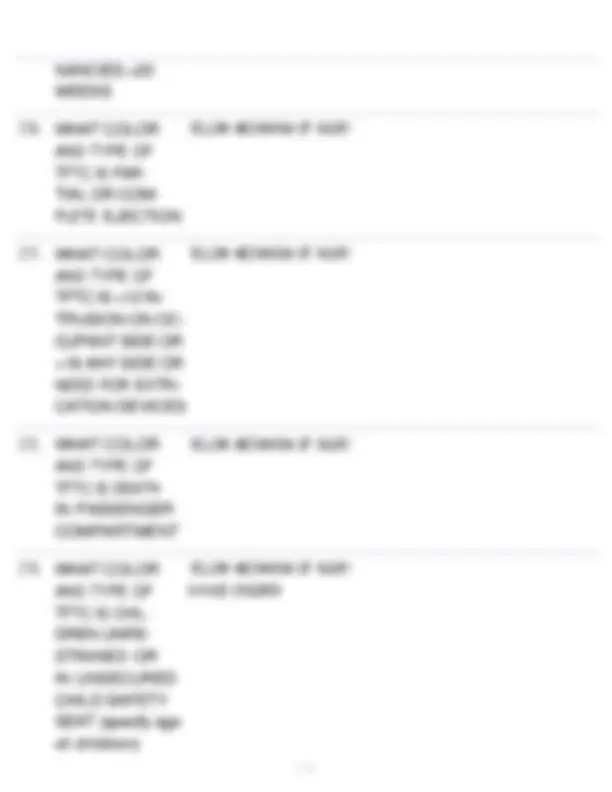
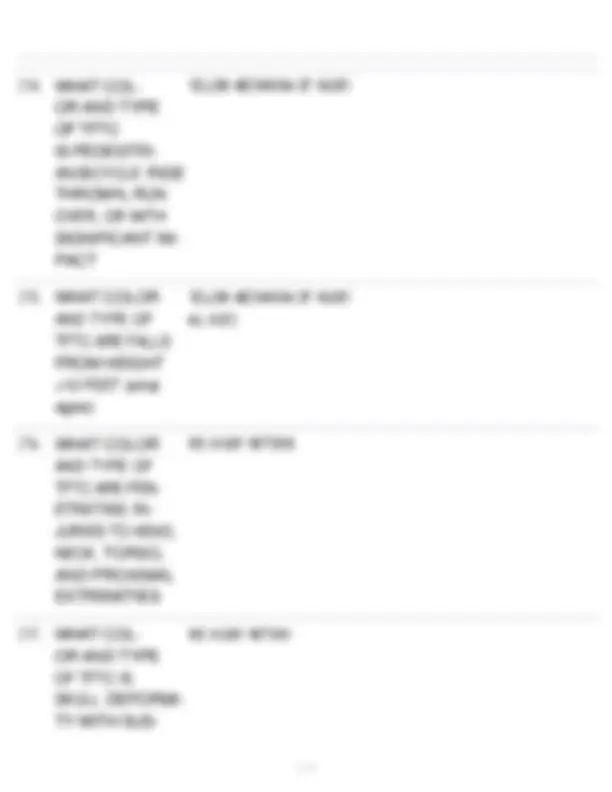
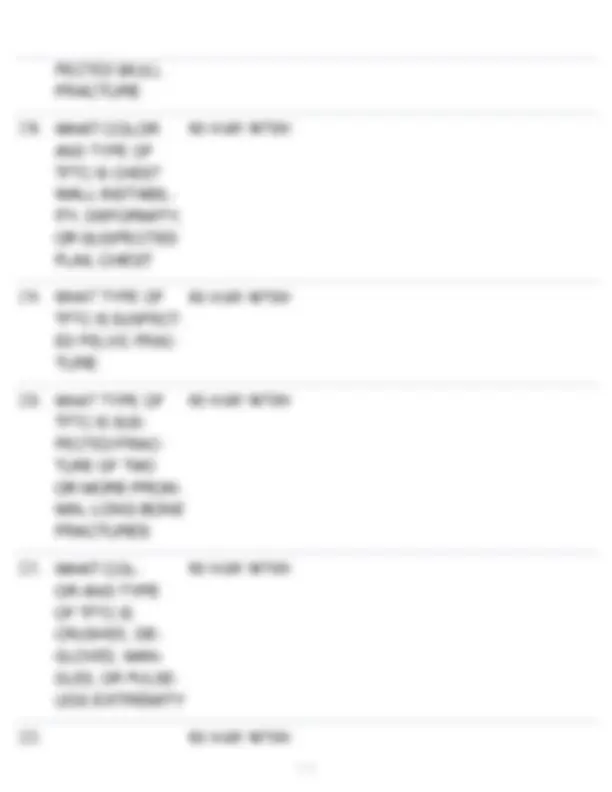
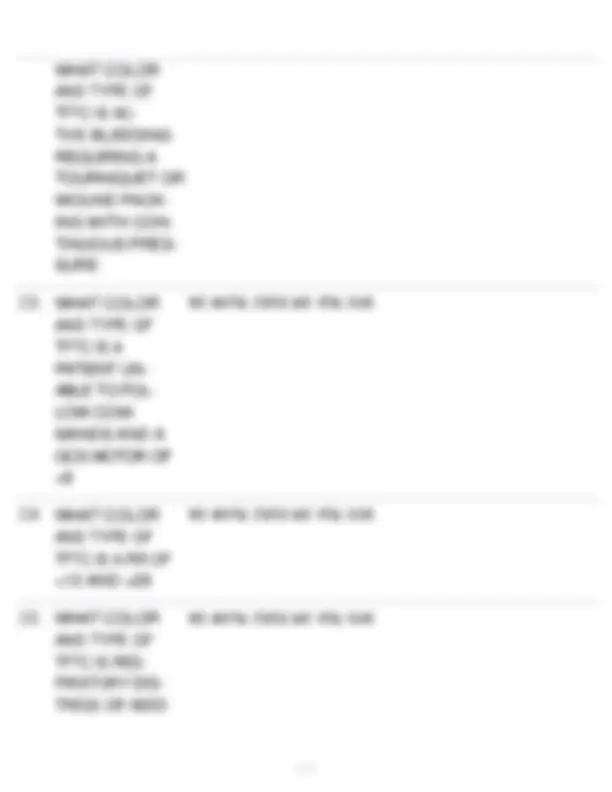
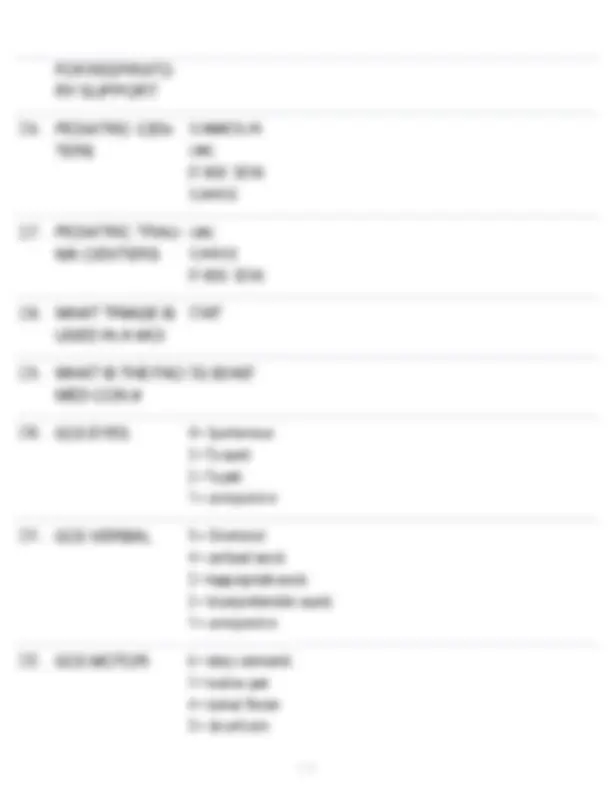



Study with the several resources on Docsity

Earn points by helping other students or get them with a premium plan


Prepare for your exams
Study with the several resources on Docsity

Earn points to download
Earn points by helping other students or get them with a premium plan
Community
Ask the community for help and clear up your study doubts
Discover the best universities in your country according to Docsity users
Free resources
Download our free guides on studying techniques, anxiety management strategies, and thesis advice from Docsity tutors
SNHD Protocol Emergency Medicine SNHD EMT PROTOCOLS EXAM PREP 2025-2026 EMERGENCY MEDICINE STUDY GUIDE
Typology: Exams
1 / 38

This page cannot be seen from the preview
Don't miss anything!































1.A person who has a complaint or mechanism suggestive of potential illness or injury
2,A person who has obvious evidence of illness or injury
3.A person identified by an informed 2nd or 3rd party caller as requiring evalua- tion for potential illness or injury
Acetylsalicylic Acid (ASPIRIN)
Swelling
Provocation
94% EQUAL OR ABOVE
If the patient is breathing on their own place them on 15L/min NRB
If the patient is is cardiac arrest, emphasis should be on oxygenation and venti- lation
If transfer of care has not occurred, the patient may be placed in the hospital waiting room or appropriate waiting area. This does not include psychiatric patients Heart Rate: 60- Respiratory Rate: 10- Systolic BP: 100- Diastolic BP: 60- Room air pulse oximetry: >94% A+Ox
Ideally, procedures should be done enroute to the hospital.
May assist the patient with their own medication x
Keep oxygen above 94% Aspirin: 324mg PO Nitroglycerin: may assist the patient with their own x
Hypotension Bradycardia Tachycardia (HR above 100) in the absence of heart failure Evidence of right ventricular infarction ED medication within last 48 hours
Recommended Exam: Mental status, HEENT, skin, heart, lungs. Back, extremities, neuro Pay careful attention to the head exam for signs of injury Be aware of AMS as presenting signs of an environmental toxin or Haz-Mat exposure. Protect personal safety and other responders Do not let alcohol confuse the clinical picture; alcohol is not commonly a cause of total unresponsiveness to pain If narcotic overdose or hypoglycemia is suspected, administer narcan
Hypoglycemia and opiate overdose
A: Assess and acknowledge the crisis
F: Facilitate the identification and activation of resources
E: Encourage patient to use resources and take action in their best interest
R: Recovery or Referral- leave the patient in care of responsible person or profes- sional, or transport to the appropriate facility
Consider medical causes for the patient's behavior
Hypoxia, intoxication/overdose, hypoglycemia, electrolytes, head injury, postictal state
Consider behavioral restraints No prone position
Medical emergency-combination of delirium, psychomotor agitation, anxiety, hallucinations, speech disturbance, disorientation, violent behavior, insensitivity to pain, hyperthermia, increased strength
Potentially life threatening, associated with the use of physical control measures include physical restrains, TASER, or similar device
Most common in male subjects with a history of serious mental illness and/or acute or chronic drug abuse, particularly stimulants
Condition causing involuntary muscle movements or spasms-typically face, neck, and upper extremities
Typically an adverse reaction to drugs such haloperidol
When recognized administer Diphenhydramine 50mg IM/IV/IO
Witnessed: CCC greater than 2 inches 100-120 bpm
Unwitnessed: 2 minutes of CCC
ADULT: 2.5mg in 3ml SVN PEDS: 2.5 mg in 3ml SVN
Second degree burns >10% BSA Any third degree burns Burns that involve the face, hands, feet, genitalia, perineum, or major joints Electrical burns including lightning injury Chemical burns Circumferential burns Inhalation burns Burn injury with concomitant trauma
SNHD submersion incident report form
Cardiac conduction disturbances Irritability Abdominal distention Nausea Diarrhea Oliguria Weakness
Cold packs Ice (do not place on patient's skin) Fanning Air conditioning
Albuterol: 2.5mg in 3mL SVN
Facial burns Signed nasal or facial hair SOBfacial edema Stridor Grunting respirations
Centennial Hills STROKE CENTERS Henderson Mountain View Southern Hills Spring Valley
St. Rose Sienna St. Rose San Martin Sunrise UMC Valley Summerlin
Centennial Hills Henderson Hospital Southern Hills Spring Valley St. Rose Sienna Sunrise UMC Valley
AMS Weakness, paralysis Blindness or other sensory loss Aphasia, dysarthria Syncope Vertigo, dizziness Vomiting Headache Seizure Respiratory pattern change Hypertension, hypotension
0
What is the score for severe leg motor function?
less than 10 min
Titrate to >94% with an OPA or an NPA
50 miles, they travel to nearest facility
Recommended Exam: Mental Status, skin, heart, lungs Anaphylaxis is acute and potentially lethal multi system allergic reaction
Epinephrine is the first-line drug that should be administered in acute anaphylaxis IM epi 1:1,000 should be administer before IV/IO access Contact medical control for refractory anaphylaxis
Consider extraglottic airway AED
weighing more than 30 kg?
CPR 3:1 Ratio
Most will respond to BVM, compressions, and EPI; if not,, consider hypovolemia, pneumothorax, or hypoglycemia
3:
Verify the validity
Patient says they want help
Name of receiving facility and physician
Copies of available diagnostics, x-rays, medical records, copy of code status, DNR, POLST, and advance directives
Paperwork is applicable
Any isolation precaution information, and the EMTALA form prior to releasing the patient
Unresponsive Apnea
Pulseless Fixed dilated pupils Asystole on 2 leads
Rigor and lividity
No resuscitation attempt
When in doubt, take to the ER
Leave everything in place
Level 1 or 2 trauma
Level 1, 2, or 3 trauma center
324mg PO (81x4)